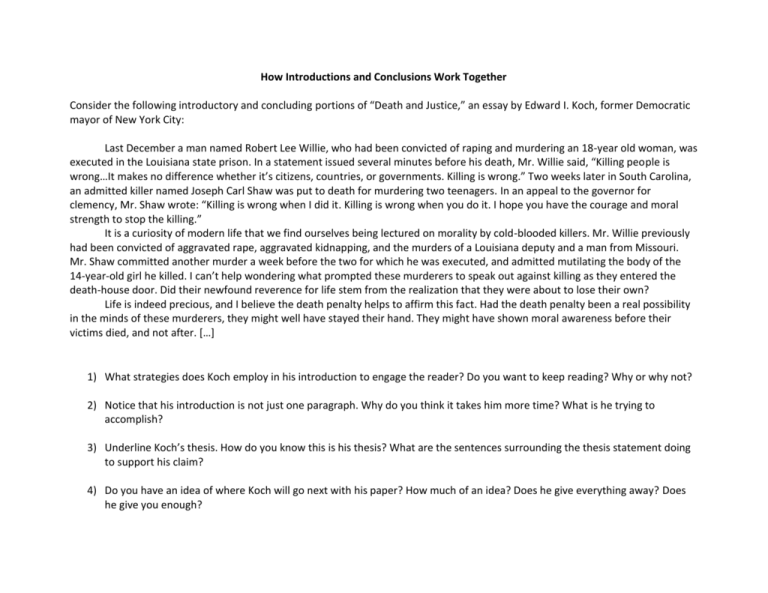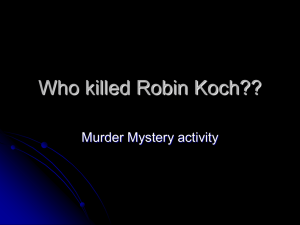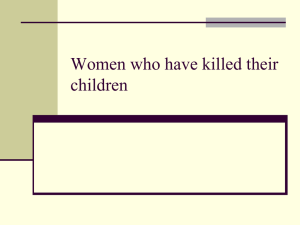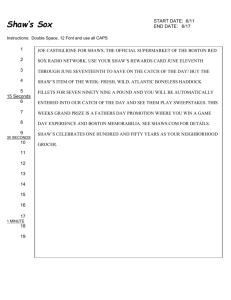as a Word Document
advertisement

How Introductions and Conclusions Work Together Consider the following introductory and concluding portions of “Death and Justice,” an essay by Edward I. Koch, former Democratic mayor of New York City: Last December a man named Robert Lee Willie, who had been convicted of raping and murdering an 18-year old woman, was executed in the Louisiana state prison. In a statement issued several minutes before his death, Mr. Willie said, “Killing people is wrong…It makes no difference whether it’s citizens, countries, or governments. Killing is wrong.” Two weeks later in South Carolina, an admitted killer named Joseph Carl Shaw was put to death for murdering two teenagers. In an appeal to the governor for clemency, Mr. Shaw wrote: “Killing is wrong when I did it. Killing is wrong when you do it. I hope you have the courage and moral strength to stop the killing.” It is a curiosity of modern life that we find ourselves being lectured on morality by cold-blooded killers. Mr. Willie previously had been convicted of aggravated rape, aggravated kidnapping, and the murders of a Louisiana deputy and a man from Missouri. Mr. Shaw committed another murder a week before the two for which he was executed, and admitted mutilating the body of the 14-year-old girl he killed. I can’t help wondering what prompted these murderers to speak out against killing as they entered the death-house door. Did their newfound reverence for life stem from the realization that they were about to lose their own? Life is indeed precious, and I believe the death penalty helps to affirm this fact. Had the death penalty been a real possibility in the minds of these murderers, they might well have stayed their hand. They might have shown moral awareness before their victims died, and not after. […] 1) What strategies does Koch employ in his introduction to engage the reader? Do you want to keep reading? Why or why not? 2) Notice that his introduction is not just one paragraph. Why do you think it takes him more time? What is he trying to accomplish? 3) Underline Koch’s thesis. How do you know this is his thesis? What are the sentences surrounding the thesis statement doing to support his claim? 4) Do you have an idea of where Koch will go next with his paper? How much of an idea? Does he give everything away? Does he give you enough? Now, let’s consider the concluding portion of Koch’s essay: Everyone wants his or her rights, and will defend them jealously. Not everyone, however, wants responsibilities, especially the painful responsibilities that come with law enforcement. Twenty-one years ago a woman named Kitty Genovese was assaulted and murdered on a street in New York. Dozens of neighbors heard her cries for help but did nothing to assist her. They didn’t even call the police. In such a climate the criminal understandably grows bolder. In the presence of moral cowardice, he lectures us on our supposed failings and tries to equate his crimes with our quest for justice. The death of anyone—even a convicted killer—diminishes us all. But we are diminished even more by a justice system that fails to function. It is an illusion to let ourselves believe that doing away with capital punishment removes the murderer’s deed from our conscience. The rights of society are paramount. When we protect guilty lives, we give up innocent lives in exchange. When opponents of capital punishment say to the state: “I will not let you kill in my name,” they are also saying to murderers “You can kill in your own name as long as I have an excuse for not getting involved.” It is hard to imagine anything worse than being murdered while neighbors do nothing. But something worse exists. When those same neighbors shrink back from justly punishing the murderer, the victim dies twice. 1) How does Koch interweave ideas from his introduction into his conclusion? Do you find this strategy successful or unsuccessful? Why? 2) Koch does not repeat his thesis statement verbatim, but carries the idea strongly to the end. What sentences serve to synthesize his initial argument? 3) Look at the last (short) paragraph. How would you describe what he’s trying to do here? (Hint: think about implication, projection, culmination, synthesis). 4) What makes this a “conclusion” or culmination of an essay? In other words, how does it have the “feel” of a conclusion? (Scroll down for a side-by-side comparison.) How Do His Introduction and Conclusion Function Together? INTRODUCTION CONCLUSION Last December a man named Robert Lee Willie, who had been Everyone wants his or her rights, and will defend them jealously. convicted of raping and murdering an 18-year old woman, was Not everyone, however, wants responsibilities, especially the painful executed in the Louisiana state prison. In a statement issued several responsibilities that come with law enforcement. Twenty-one years minutes before his death, Mr. Willie said, “Killing people is wrong…It ago a woman named Kitty Genovese was assaulted and murdered on makes no difference whether it’s citizens, countries, or governments. a street in New York. Dozens of neighbors heard her cries for help but Killing is wrong.” Two weeks later in South Carolina, an admitted did nothing to assist her. They didn’t even call the police. In such a killer named Joseph Carl Shaw was put to death for murdering two climate the criminal understandably grows bolder. In the presence of teenagers. In an appeal to the governor for clemency, Mr. Shaw moral cowardice, he lectures us on our supposed failings and tries to wrote: “Killing is wrong when I did it. Killing is wrong when you do it. I equate his crimes with our quest for justice. hope you have the courage and moral strength to stop the killing.” The death of anyone—even a convicted killer—diminishes us It is a curiosity of modern life that we find ourselves being all. But we are diminished even more by a justice system that fails to lectured on morality by cold-blooded killers. Mr. Willie previously had function. It is an illusion to let ourselves believe that doing away with been convicted of aggravated rape, aggravated kidnapping, and the capital punishment removes the murderer’s deed from our murders of a Louisiana deputy and a man from Missouri. Mr. Shaw conscience. The rights of society are paramount. When we protect committed another murder a week before the two for which he was guilty lives, we give up innocent lives in exchange. When opponents executed, and admitted mutilating the body of the 14-year-old girl he of capital punishment say to the state: “I will not let you kill in my killed. I can’t help wondering what prompted these murderers to name,” they are also saying to murderers “You can kill in your own speak out against killing as they entered the death-house door. Did name as long as I have an excuse for not getting involved.” their newfound reverence for life stem from the realization that they It is hard to imagine anything worse than being murdered were about to lose their own? while neighbors do nothing. But something worse exists. When those Life is indeed precious, and I believe the death penalty helps same neighbors shrink back from justly punishing the murderer, the to affirm this fact. Had the death penalty been a real possibility in the victim dies twice. minds of these murderers, they might well have stayed their hand. They might have shown moral awareness before their victims died, and not after. […]









